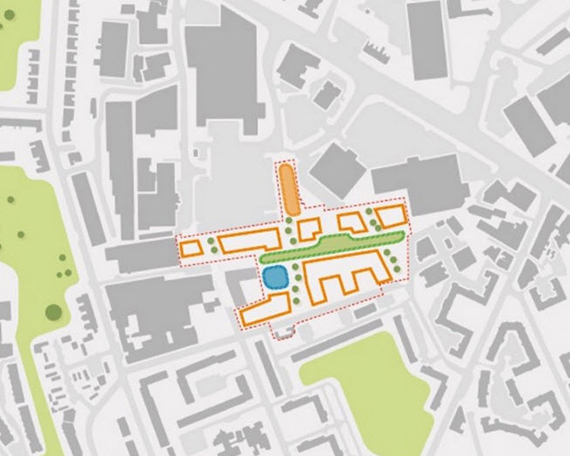Berkeley lands on Old Kent Road
Initial EIA plans have been submitted by Berkeley for the first major scheme to come forward within the Old Kent Road Opportunity Area in south London. Although still going through the consultation phases, the Opportunity Area has an ambitious figure to provide 20,000 new homes across its 281 hectares.
If Berkeley Homes gets its way, 884 of those could come from this scheme alone, provisionally known as the Malt Street Regeneration. Documents reveal several towers will be included in the plans, with the tallest rising to 36 storeys. A linear park is also included, which runs along the former route of the Grand Surrey canal.
Initial EIA plans have been submitted by Berkeley for the first major scheme to come forward within the Old Kent Road Opportunity Area in south London. Although still going through the consultation phases, the Opportunity Area has an ambitious figure to provide 20,000 new homes across its 281 hectares.
If Berkeley Homes gets its way, 884 of those could come from this scheme alone, provisionally known as the Malt Street Regeneration. Documents reveal several towers will be included in the plans, with the tallest rising to 36 storeys. A linear park is also included, which runs along the former route of the Grand Surrey canal.
Famous for being the cheapest area on a Monopoly board, the area is soon to benefit through planning policy as an opportunity area. In addition, long-term plans for an extension to the Bakerloo Line, where two new stations are a planned along Old Kent Road, makes now an obvious time as any to be submitting ambitious proposals. It is no surprise that the biggest London housebuilder, Berkeley, was first with acquiring sites and submitting plans. Where it leads, others are soon to follow.
It will be interesting to see how Southwark Council receives the plans prior to the opportunity area being ratified. A scheme with a tower rising to 36 storeys and with a density of 383 homes per hectare will set quite a precedent.
Interact with Paul Wellman on Twitter @paulwellman_EG
Read more from the London Residential Research team >>











